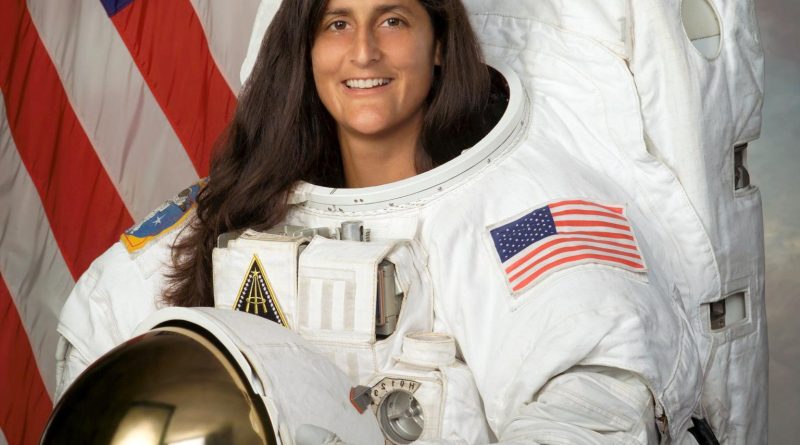Sunita William
Essay on Sunita Williams: A Trailblazer in Space Exploration
Sunita Williams, an American astronaut, engineer, and Navy officer, has made significant contributions to space exploration. Her remarkable journey in space has not only marked her as one of the most accomplished astronauts of her time but has also broken barriers for women in the fields of science and technology. Known for her record-breaking spacewalks and extensive missions aboard the International Space Station (ISS), Williams is an inspiring figure in both space exploration and human perseverance.
Early Life and Education
Sunita Williams was born on September 19, 1965, in Euclid, Ohio, to a family of Indian descent. Her father, Dr. Deepak Pandya, was a renowned doctor, and her mother, Bonnie Pandya, was a nurse. Williams’ interest in space exploration developed early in life. She was an active child, excelling in both academics and sports.
Williams attended the United States Naval Academy in Annapolis, Maryland, and graduated in 1987 with a degree in Marine Engineering. Later, she went on to earn a Master of Science in Engineering Management from the Florida Institute of Technology in 1995. The combination of her engineering background and leadership skills made her an ideal candidate for NASA’s astronaut program.

Career in the U.S. Navy
Before becoming an astronaut, Williams served in the U.S. Navy, where she became a Navy officer and a test pilot. She was assigned to several missions and flew various types of aircraft, including the McDonnell Douglas F/A-18 Hornet, which is a carrier-based multirole combat aircraft. Her military career served as a crucial foundation for her later work with NASA. Williams was not only an accomplished pilot but also demonstrated exceptional leadership and problem-solving skills, which would become vital in her space missions.
Becoming an Astronaut
In 1998, Williams was selected as a NASA astronaut candidate, joining the 17th class of astronauts. She was one of only a few women chosen for this prestigious role. Her selection was a major milestone in the ongoing effort to promote diversity and inclusivity in the space program. In 2006, Williams made her first trip to space aboard Space Shuttle Discovery during the STS-116 mission. This mission was part of the assembly of the International Space Station (ISS). It was a significant milestone for Williams and for NASA, as she played a key role in the installation of a major truss segment of the ISS.
Spacewalks and Records
Sunita Williams is perhaps best known for her extraordinary spacewalks. In 2007, Williams set a record for the longest spacewalk by a woman at the time, spending 8 hours and 56 minutes outside the ISS. Her spacewalk was part of a mission to replace and repair equipment on the space station. This record-breaking achievement highlighted her physical endurance, technical skill, and ability to perform in the challenging and unpredictable environment of outer space.
Williams broke her own record in 2009 during her second mission, when she spent even more time outside the ISS during a series of spacewalks. Her total time outside the space station during these spacewalks exceeded 50 hours, further cementing her legacy in the history of human space exploration.
Further Missions and Achievements
Williams’ second space mission, Expedition 14/15, launched aboard the Space Shuttle Discovery in 2007. She spent six months aboard the ISS, where she worked on experiments, conducted repairs, and contributed to the ongoing assembly of the space station. Her expertise and dedication were invaluable during this mission, and she quickly became a respected member of the ISS crew.
In addition to her technical and scientific contributions, Williams served as a mentor to younger astronauts and helped foster teamwork among international crews. Her role as an educator also extended to her work in public outreach, where she inspired young people around the world to pursue careers in science, technology, engineering, and mathematics (STEM).
Legacy and Impact
Sunita Williams’ legacy goes beyond her technical achievements and space exploration records. She represents the breaking of barriers, particularly for women in the historically male-dominated fields of science, engineering, and space exploration. Her success has paved the way for future generations of women to pursue careers in STEM and has shown that with determination, dedication, and the right support, any barrier can be overcome.
Williams has also been a strong advocate for the advancement of space exploration as a way to push the boundaries of human knowledge. Her work aboard the ISS, conducting scientific experiments in microgravity, has provided valuable insights into human health and the effects of long-term space travel. These findings are crucial for the future of human exploration beyond Earth, including missions to Mars and beyond.

Her achievements have not gone unnoticed. In 2007, Williams received the NASA Space Flight Medal and the Navy Commendation Medal for her exceptional service. She has also been recognized by various organizations for her contributions to science and her trailblazing role as a female astronaut.
Conclusion
Sunita Williams is more than just an astronaut; she is a symbol of resilience, excellence, and the potential of human achievement. Her groundbreaking work aboard the ISS, her record-breaking spacewalks, and her role as a mentor and advocate for science and space exploration have left an indelible mark on the history of spaceflight. She has shown the world that with determination and passion, there is no limit to what can be achieved, inspiring future generations to dream big and reach for the stars.

